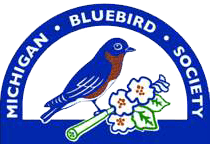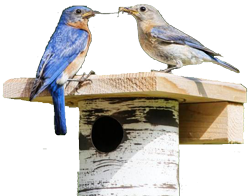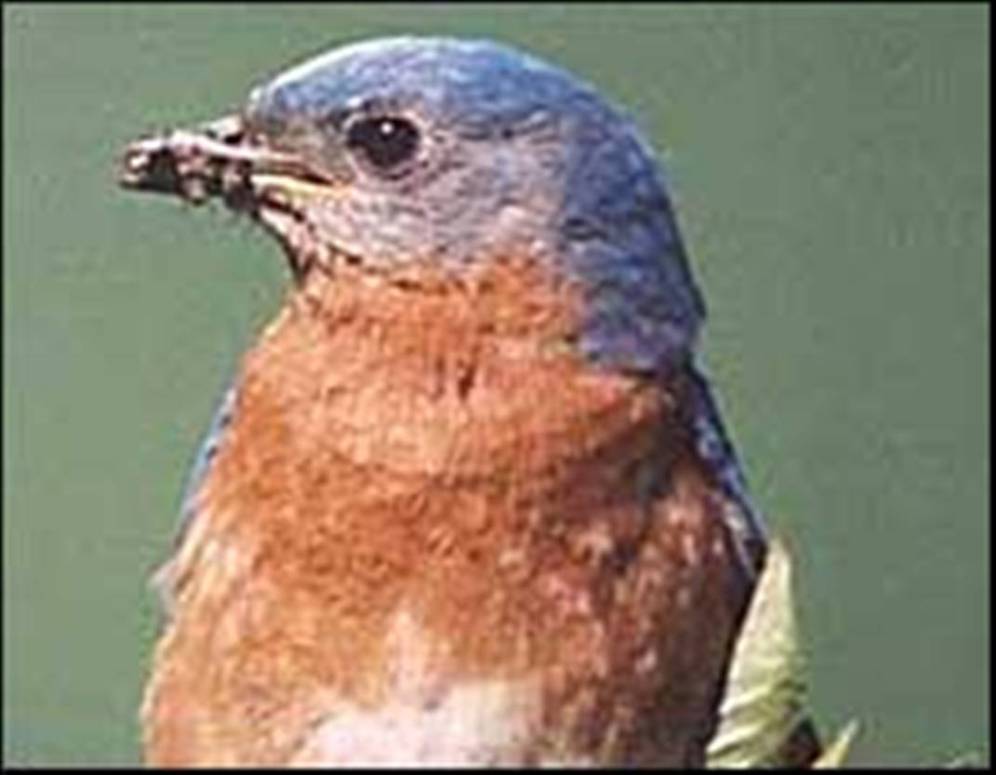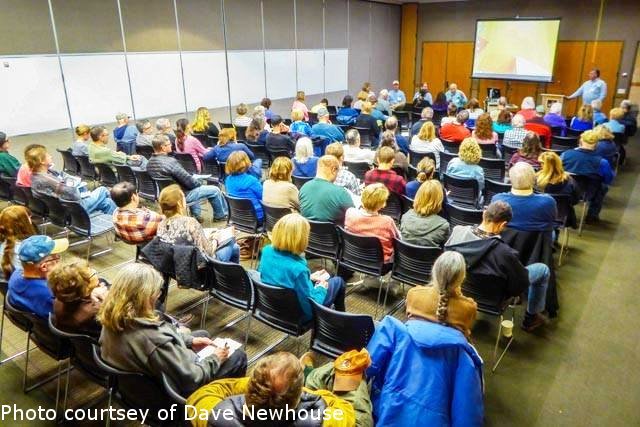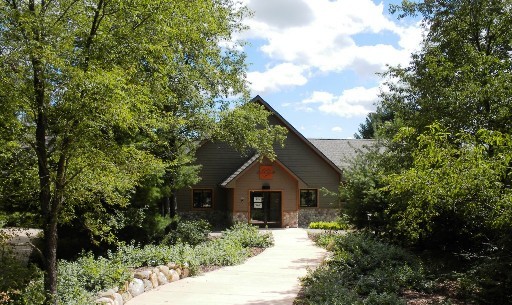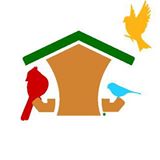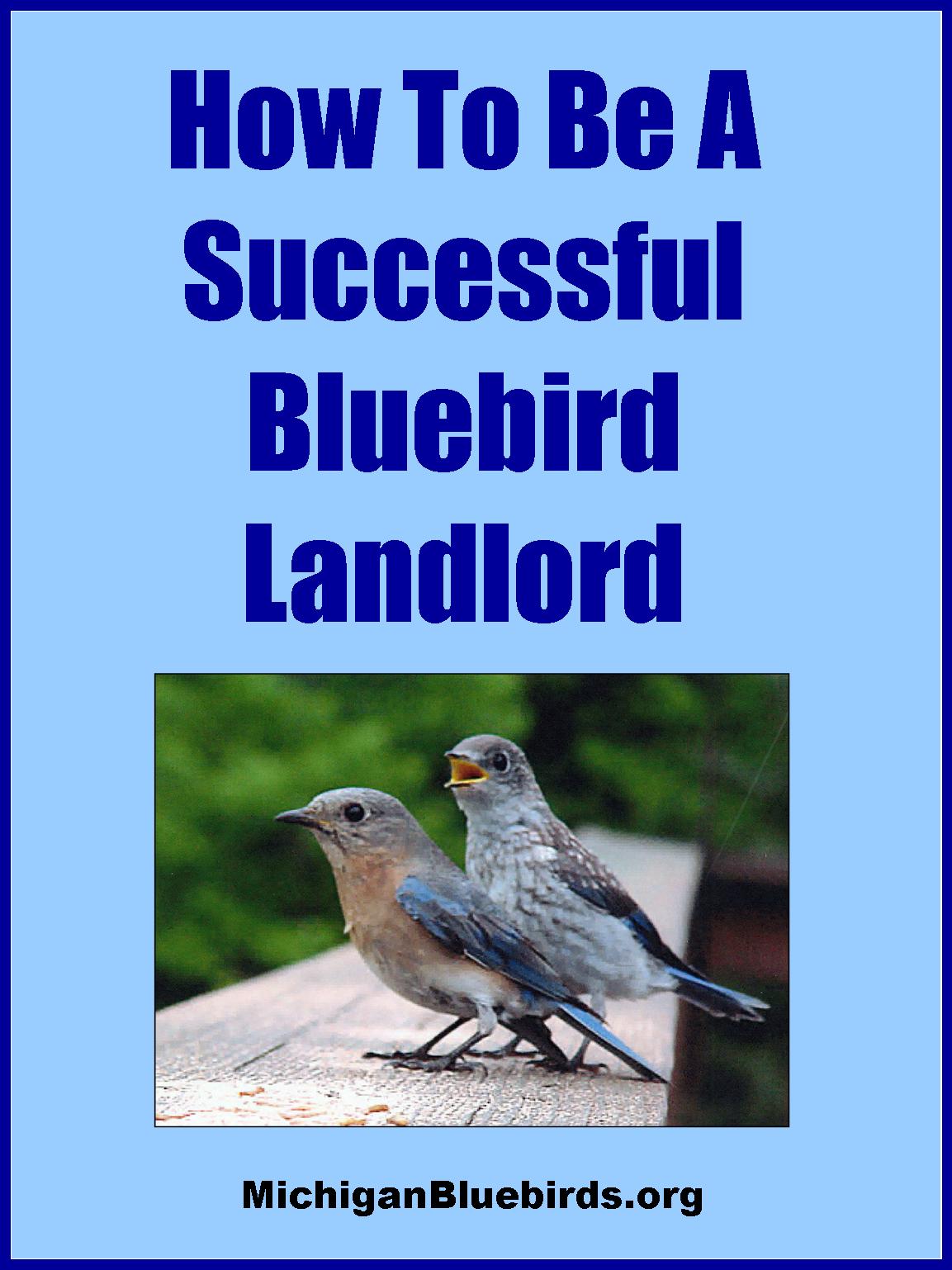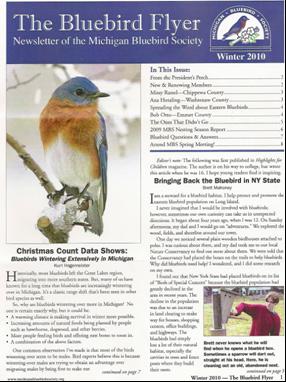Monitoring Your Bluebird Nest Boxes
Part of being a responsible bluebird "landlord" is providing as safe a nesting situation as you can through active nest box monitoring.  Monitoring simply means doing periodic checks inside all of the nesting boxes you own or are managing in order to A) see whether native cavity nesting birds are using the box or not, and the status of the nest B) whether the box has been raided by predators, C) whether the box requires maintenance or not, D) determine if insect parasites have invaded the box, E) be able to record nesting data, and F) to ensure non-native birds species are not nesting in the box.
Monitoring simply means doing periodic checks inside all of the nesting boxes you own or are managing in order to A) see whether native cavity nesting birds are using the box or not, and the status of the nest B) whether the box has been raided by predators, C) whether the box requires maintenance or not, D) determine if insect parasites have invaded the box, E) be able to record nesting data, and F) to ensure non-native birds species are not nesting in the box.
Why Monitor Your Nesting Boxes?
Research has shown conclusively that actively monitored nesting boxes produce a significantly higher number of fledged young than unmonitored boxes. Also, nesting boxes that are not monitored will often produce multiple broods of highly destructive house sparrows (a non-native, invasive bird species) that will compete for nesting sites with native birds.
The fact is that nesting boxes are artificial nesting sites that we have introduced to native bird habitats. Yes, bluebirds will often fledge successfully from unmonitored nesting boxes. But as landlords, we must do all we can to ensure our "tenants" have as safe a place to live as we can provide.
Please note that it is a MYTH that birds will abandon a nesting box if humans open it up or touch the nest and young. First, birds do not have a sense of smell, so they can't detect your "scent". Second, birds are bonded strongly to their nest and young and will not abandon them easily. You don't want to touch the young or eggs much or at all unless you have to.
It is the position of the Michigan Bluebird Society that bluebird housing should NOT be put up unless it's going to be actively monitored. It is worse to create a "sparrow factory" than to put out a nesting box that bluebirds might or might not use.
How To Monitor
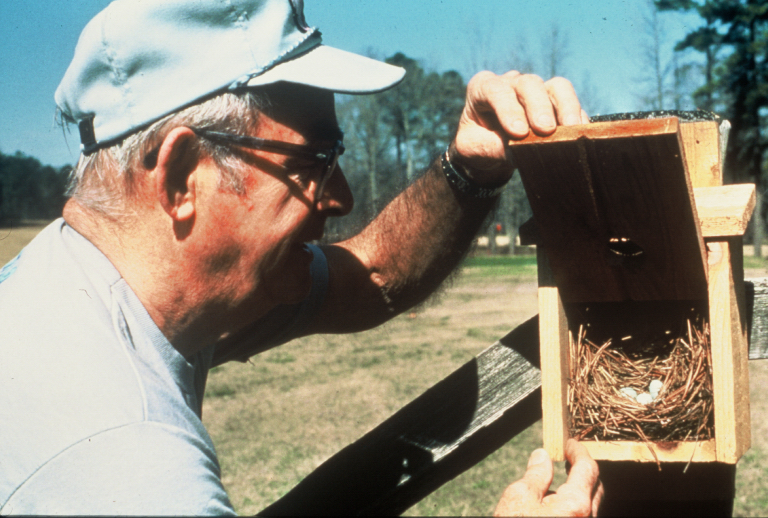 Don't be intimidated about monitoring. It's very easy and doesn't take a lot of time (unless you have dozens of nesting boxes!). Check all your boxes about once or twice a week. Walk up to the box and make some soft sounds or gently tap the side of the box to warn the adult bird(s) if they are still inside. Open the box up and look inside so you can see the complete nest. Make a note of anything pertinent: type of bird nesting, number of eggs or young if present, their general health appearance, need for repair of the box, etc, then close up the box and walk away briskly. It shouldn't take more than a minute. If the birds dive bomb you, that's perfectly fine. Tree Swallows or Bluebirds have almost never been known to actually touch people.
Don't be intimidated about monitoring. It's very easy and doesn't take a lot of time (unless you have dozens of nesting boxes!). Check all your boxes about once or twice a week. Walk up to the box and make some soft sounds or gently tap the side of the box to warn the adult bird(s) if they are still inside. Open the box up and look inside so you can see the complete nest. Make a note of anything pertinent: type of bird nesting, number of eggs or young if present, their general health appearance, need for repair of the box, etc, then close up the box and walk away briskly. It shouldn't take more than a minute. If the birds dive bomb you, that's perfectly fine. Tree Swallows or Bluebirds have almost never been known to actually touch people.
When to Monitor
You only need to monitor boxes during nesting season - which lasts from March to August. Try to monitor your boxes in the afternoon if possible and not near dawn or dusk. Avoid monitoring if the nestlings are past 12-14 days old and approaching fledging. Otherwise, they might leave the box before they can fly. Generally, it's best to avoid monitoring much during cold weather. But if it is chilly and wet, you'll want to check the status of the young to see if they are getting enough food.
What To Look For And How To Deal With it
There are a lot of issues that you will want to check for. Below are some of the main ones in no particular order. With a little knowledge and experience, you'll be able to deal with all of them.
1. Species of bird nesting - 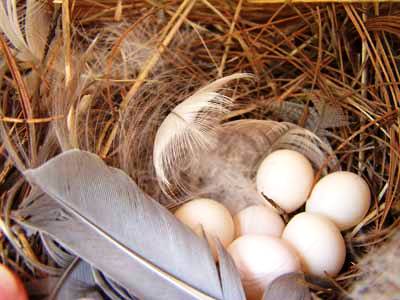 bluebirds make tightly woven nests of grass about 2" high. Tree Swallow nests are similar, but often include feathers. Wrens make nests entirely of sticks and twigs, and will fill up the entire nest box. Chickadees make tightly woven nests of grass, animal hair, moss, and spider webs. House sparrows fill the box with a messy mixture of grasses, sticks, feathers, and trash.
bluebirds make tightly woven nests of grass about 2" high. Tree Swallow nests are similar, but often include feathers. Wrens make nests entirely of sticks and twigs, and will fill up the entire nest box. Chickadees make tightly woven nests of grass, animal hair, moss, and spider webs. House sparrows fill the box with a messy mixture of grasses, sticks, feathers, and trash.
2. Evidence of predation - if the nest has been damaged or otherwise disturbed and there are broken egg shells on the ground, and possibly muddy tracks or marks on the pole, it's very possible raccoons or squirrels have gotten into the house. You'll need to put a predator guard on the pole or possible apply wax or grease to prevent this problem from re-occurring. See our Problem Solving page for more information.
3. Ants invaded box - Bluebirds will not nest in an ant-infested box. Apply some ant killer near the bottom of the pole to prevent them from climbing it.
4. Wasps in box - Always be careful when doing nesting box checks. Watch the box for several minutes to see if any wasps fly in or out. Then, open it carefully and stand back if you're suspicious of wasps being inside. Wasps usually build their nests on the underside of the roof, but sometimes will build it on the box floor underside. Remove the nest when it's cold outside and the wasps are less active or spray it with wasp killer. If you do the latter, you'll need to thoroughly clean out the box with bleach solution and let dry before putting it back up. A trick to prevent this is to smear bar soap on the roof underside in the spring so the wasps can't attach their nests to it.
5. Box Damage - wood that becomes rotted or warped, or has holes from woodpeckers or knots falling out can make a house draftier and wetter. This is bad for the birds nesting in it obviously. If there is no bird nest in it, take the box down and repair it. Otherwise, gaps can sometimes be plugged temporarily with small strips of cloth.
6. Sparrow Nesting - you need to prevent house sparrows from successfully nesting in your boxes. 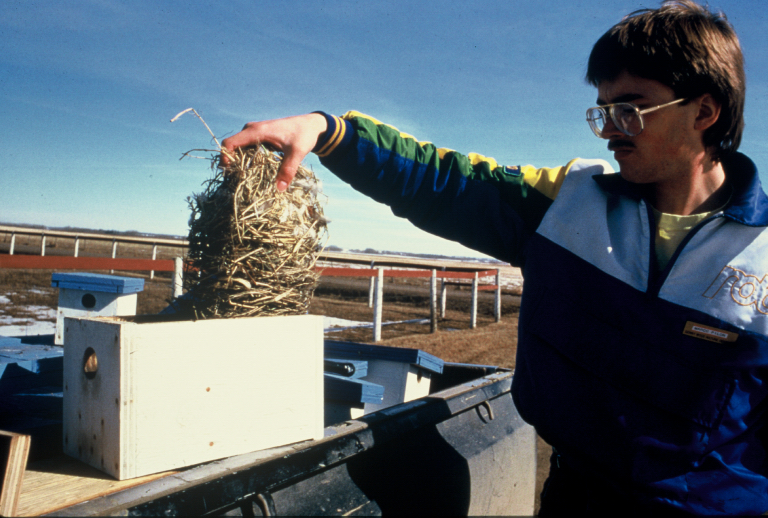 If you find a sparrow nest, remove it including any eggs or young that may be there too. See our Problem Solving Page for details on how to control house sparrows.
If you find a sparrow nest, remove it including any eggs or young that may be there too. See our Problem Solving Page for details on how to control house sparrows.
7. Blowfly Infestation - If there are young birds in the nest, make sure to carefully check under the nest to see if there are any blowfly pupa. These 1/4" long brown oval shaped insect larva can cause nest failure (death of the young birds) if it is severe enough. This often occurs in wet, warm, and humid weather. Carefully lift up the edge of the nest to see if they're underneath it (this is where they reside during the daytime). If you see them, sweep them out of the box. If the nest is extremely wet, you may need to replace it with a dry one. Do this by carefully removing the young birds and put them on a towel in a small shallow box. Get some dry grass and fashion it into a new 2" high nest. Put it in the box and replace the young to the nest.
8. Malnourished Young - it will take some experience to tell when this is a problem, but can occur in prolonged bouts of cold wet weather in the spring or if the female has died and can't brood the young. Cold wet weather prevents bluebirds from finding enough food for both them and the young. If this happens, they'll feed themselves first and let the young starve. You can start feeding meal worms to help prevent nest failure. See our Feeding Bluebirds page for how to do this. If you believe the birds have been abandoned (no parents coming for hours or 1/2 day), you may need to take the young birds to a licensed bird rehabilitator.
9. Unhatched Eggs - if it's been at least 72 hours since the last of the eggs hatched and there are still any eggs left unhatched, they are probably infertile. This is normal, but it presents a risk to the safety of the nest. If the egg becomes rotten and accidently breaks, it may attract insects or predators. Remove infertile eggs and dispose of them far from the box.
10. Old, Used Nest In Box - at the end of the season or after a brood of young fledges, it's very important to remove the old nest. These nests are often fouled with droppings, can harbor blowflies or feather mites, and may be wet. Take out the nest and clean the inside of the box with a garden hose. Even better, scrub it out with a 10% bleach/90% water solution.
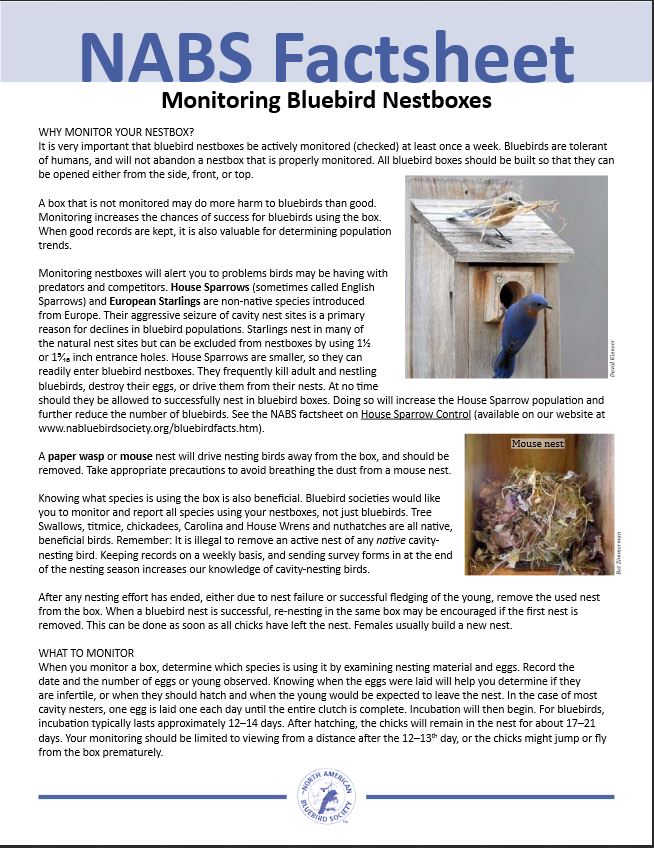
Collecting And Submitting Nesting Data
The MBS strongly encourages all members to record nesting data for all of their boxes and submit it to the organization at the end of the season. This data is very important in helping us identify nesting bird trends in Michigan and adds to our body of knowledge in how bluebirds and other cavity nesting birds are doing. Also, it's good for you because it helps you know which of your boxes are the most successful and which ones may require relocation.
Here is a helpful data collection form you can print out for each of your nest boxes. This will give you a place to record what you find on each of your nest box checks. Nest Box Monitoring Form
For those of you who prefer to keep your records electronically, here is a form you can download and store on your computer to record your data in. Note that you must download the form to your computer first for it to be fillable. Fillable PDF Nest Box Monitoring Form
Please be sure to print and complete the 2019 Nesting Season Summary Report and return it to the Michigan Bluebird Society at the end of the season, so we can include your Bluebird data in our statistics. Here is a link to the form. 2023 Nesting Season Summary Form
If you would prefer to send us your data electronically, here is an Excel spreadsheet you can use to record your data. When complete email it to This email address is being protected from spambots. You need JavaScript enabled to view it. 2023 Nesting Season Summary Excel Spreadsheet
